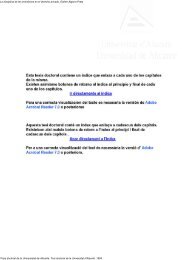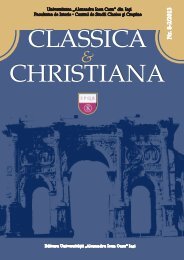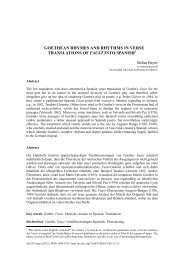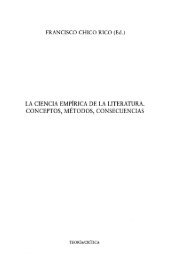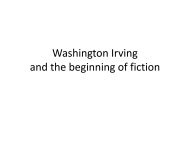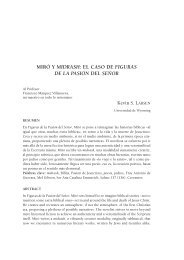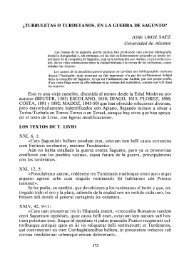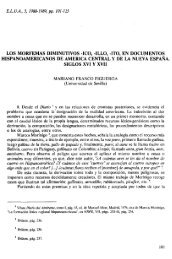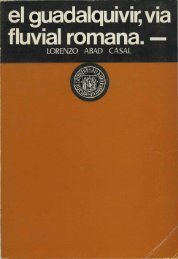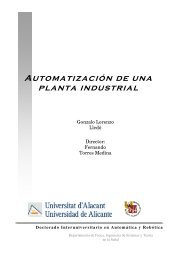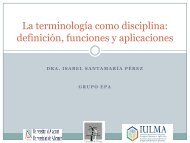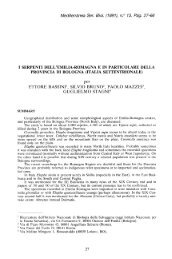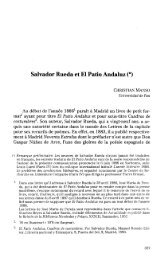ecological effects of marine protected areas empafish project ...
ecological effects of marine protected areas empafish project ...
ecological effects of marine protected areas empafish project ...
You also want an ePaper? Increase the reach of your titles
YUMPU automatically turns print PDFs into web optimized ePapers that Google loves.
EMPAFISH Booklet no. 1 Ecological <strong>effects</strong> <strong>of</strong> Atlanto-Mediterranean MPAs in the EU<br />
anthropogenic wastes were also studied in the central side <strong>of</strong> the Gulf (Calvo<br />
& Genchi 1989; D’Anna et al. 1985; D’Anna et al. 1990; Riggio et al. 1992;<br />
Riggio et al. 1994). A few studies were carried out on the rocky bottom<br />
assemblages <strong>of</strong> the Zingaro Reserve (Riggio et al. 1985; Sparla & Riggio<br />
1990; Badalamenti et al. 1992a, 1992b; Suriano et al. 1992), which is a<br />
partially <strong>protected</strong> area located along the west side <strong>of</strong> the Gulf.<br />
Several studies were conducted to investigate the oceanographic features <strong>of</strong><br />
the area, but very few data have been published (Genovese 1996).<br />
o Aquaculture<br />
In the 1990’s the Gulf’s coastal zone has been used for pilot studies in the<br />
open sea culture <strong>of</strong> fish and bivalves (Mazzola 1993, 1996; Sorvillo et al.<br />
1993, 1994; Mazzola et al. 1996; Vega Fernandez et al. 2003); <strong>of</strong>fshore cages<br />
are now used for the culture <strong>of</strong> bass and bream and for the stabulation <strong>of</strong><br />
bluefin tuna. The co-occurrence <strong>of</strong> artificial reefs, <strong>of</strong>fshore cages and trawl<br />
ban make the Gulf a particularly complex area under the aspect <strong>of</strong> fisheries<br />
and coastal management (Pipitone et al. 2004).<br />
o Feeding ecology <strong>of</strong> fishes<br />
Several studies have been carried out on fish species at the fishery reserve<br />
<strong>of</strong> Castellammare (Badalamenti et al. 1993b; Pepe et al. 1996; Lipari et al.<br />
1998; Pepe et al. 1998). The diet <strong>of</strong> Dipodus annularis, Lithognathus<br />
mormyrus and Mullus barbatus have been investigated in the Artificial Reef<br />
Area and in Control Areas while for Diplodus sargus and D. vulgaris data<br />
only exists for the Artificial Reef Area. Furthermore, the daily food intake <strong>of</strong><br />
M. barbatus and D. annularis has been estimated. Results show that only<br />
D. vulgaris has a strong trophic link with the artificial substrates and that<br />
the other species depend more on the surrounding s<strong>of</strong>t substrates and on<br />
the Cymodocea nodosa seagrass meadow nearby for food.<br />
M. barbatus has a circadian feeding rhythm, with peaks <strong>of</strong> stomach fullness<br />
after dawn and before dusk. Food consumption varies from approximately 2<br />
and 6 percent <strong>of</strong> the body weight and depends on seasons. D. annularis has<br />
only one peak during the middle <strong>of</strong> the day and does not feed at night.<br />
Food consumption is about 3% <strong>of</strong> the body weight. Data are also available<br />
on the diet and on the daily food consumption for the juveniles <strong>of</strong> Seriola<br />
dumerili hovering underneath FADs (Badalamenti et al. 1995b;<br />
Badalamenti et al. 1998).<br />
� The fishery reserve<br />
o Effect on fish biomass<br />
The first study on the effect <strong>of</strong> the year-round trawl ban imposed on the Gulf<br />
<strong>of</strong> Castellammare was carried out in 1994 (Pipitone et al. 1996, 1997b, 2000).<br />
To assess the effect <strong>of</strong> the ban on the abundance <strong>of</strong> demersal resources,<br />
CPUEs from experimental trawl surveys carried out before the ban (spring<br />
73



